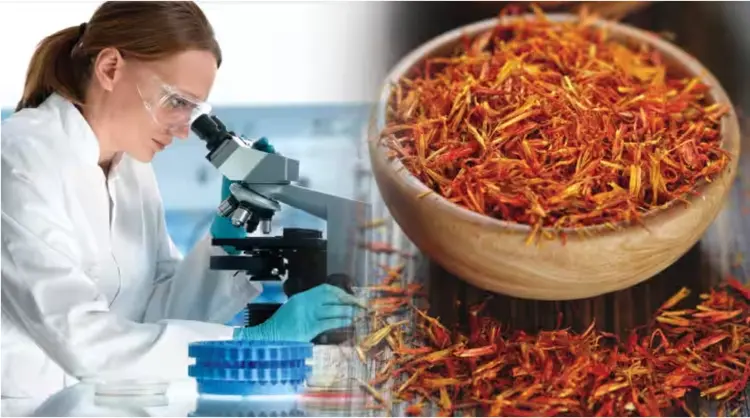Saffron From Different Regions And Their Anticancer Potential.
After extensive research across multiple areas of Iran, it has been found that saffron's potent anti-cancer properties differ in any cultivation region. the best type of it was cultivated in the Khorasan province of Iran.
It has been shown to possess high levels of compounds such as crocin and safranal, which have been found to have anti-cancer properties. It is important to note that other saffron varieties grown in different regions of Iran may also possess anti-cancer properties, but further research is needed to determine their potency levels.
Breast cancer is a disease caused by the uncontrolled proliferation of cells or in which cells in the breast grow out of control. The most common breast cancer treatment methods are surgery, chemotherapy, and radiation therapy, each of which has adverse side effects for patients. For this reason, scientists are trying to find compounds with fewer side effects to kill cancer cells.
Saffron has medicinal compounds such as "Crocin" and "safranal." Due to these miracle components, it has been considered by cancer researchers. Saffron grows in different world zones, especially in Iran, France, Turkey, Egypt, the United Arab Emirates, Mexico, Switzerland, Australia, New Zealand, and Algeria. It was well used as an analgesic and sedative treatment many years ago.
Anti-cancer mechanisms of saffron action and its components are still not well known. However, some activities, such as inducing apoptosis (programmed cell death), inducing cell cycle arrest, etc., have been proposed in some research. Chemotherapy drugs also apply anti-cancer drugs through the induction of apoptosis. Whether the cell or programmed death indicates the initiation or progression of cancer, induction of apoptosis also becomes one of the best strategies for cancer treatment.
Many researchers have recently acknowledged that saffron extracts have anti-cancer properties. Considering that this plant species' anti-cancer effect is related to its compounds (Crocin, Crosetin, Picrocrocin, and Safranal), these compounds' amounts vary depending on the geographical saffron cultivation area. Saffron is explicitly cultivated in the northeastern regions of Iran. But recently, this precious spice has been produced in other parts of Iran, from the western areas to the eastern of the country. The researchers of the Department of Biological Sciences of Kurdistan University have investigated the anti-cancer properties of saffron collected from different regions of Iran on two types of human breast cancer.
They first collected saffron stigmas from five different places in Iran regions, including Gonabad, Najafabad, Isfahan, Sarovabad, Qain, and Kohdasht of Lorestan, and then took water extracts and methanolic extract from them and added them to the culture medium of cancer cells and after passed 48 and 72 hours the bioactivity of saffron extracts was carefully investigated. Their studies showed that the aqueous extracts of all five types of saffron have a positive cytotoxic effect on the MDA-MB-231 cell line. Also, they have proved that the anti-cancer effects of aqueous extracts of Gonabad and Najafabad saffron on MDA-MB-231 cancer cells were more effective than others and increased their positive impact over time. "The cultivated saffron in the Gonabad region had the greatest cytotoxic effect. Also, the cytotoxic effect of the methanolic extracts was more than the aqueous extracts."
Moreover, they found that the cytotoxic effect of methanolic extract of all types of saffron except the Serovabad sample on MDA-MB-231 cells had been higher than the effect of each aqueous extract. In this study, using the ISO 3632 standard, the researcher also examined the quality of saffron in those regions and discussed. The result revealed that the Sarvabad saffron sample is in the second quality category, and the Gonabad, Najafabad, and Kohdasht samples are in the third. Others, such as Qain's saffron, were placed in the fourth category because their saffron had the lowest amount of Crocin and Picrocrocin compared to others. Also, in their study, the relationship between the quality of saffron and its cytotoxic effect was not reported.
Sheidaei N, Shakeri R. The Comparison of Anticancer Properties of Collected Saffron from Different Region of Iran on Human Breast Cancer Cells. Experimental animal Biology. 2022 Jun 22;11(1):11-22.
Hamed Biglari
Assistant Professor of Environmental Health Engineering in Gonabad University of Medical Sciences, Razavi Khorasan, Iran




Your Comment
Required fields*